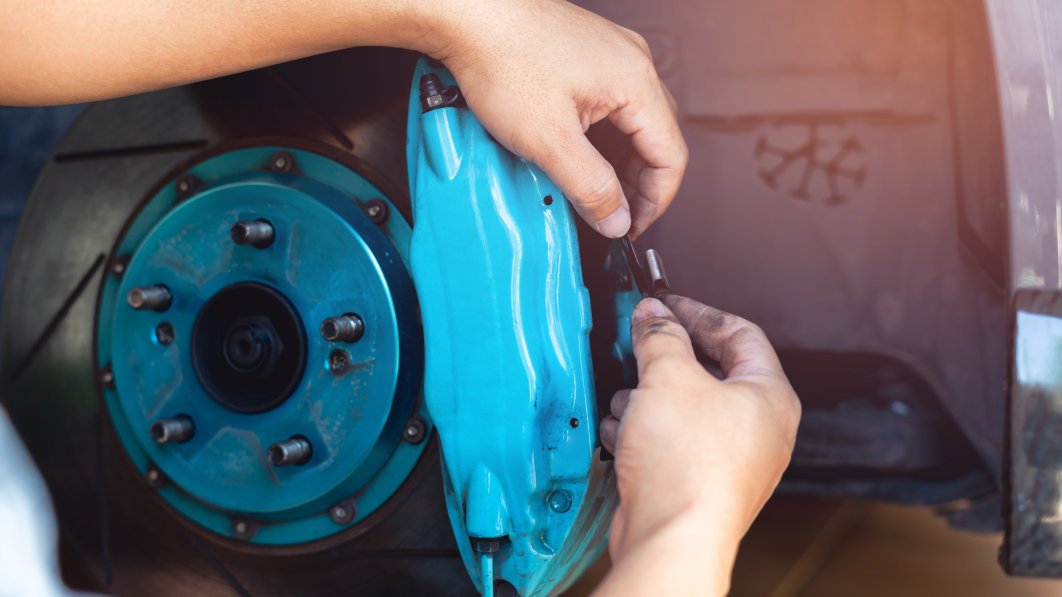Upgrading your vehicle’s brakes can significantly improve its performance, safety, and driving experience. Whether you’re looking for better stopping power, enhanced handling, or improved durability, understanding brake upgrades is crucial. This guide covers the types of brake upgrades available, their benefits, and key considerations to help you make informed decisions for your vehicle.

Types of Brake Upgrades
1. Performance Brake Pads
Description: Performance brake pads are designed to provide better stopping power and heat resistance compared to standard pads. They are made from high-friction materials that enhance braking performance, especially under high-stress conditions.
Benefits:
- Improved Stopping Power: Better performance in both daily driving and high-performance situations.
- Enhanced Heat Resistance: Reduces brake fade during aggressive driving or frequent braking.
- Better Control: Offers more consistent braking performance.
Considerations:
- Noise and Dust: Performance pads can be noisier and produce more brake dust than standard pads.
- Cost: Higher performance pads may come at a premium compared to standard options.
2. High-Performance Rotors
Description: High-performance rotors are designed to handle higher temperatures and provide better braking efficiency. They come in various types, including slotted, drilled, and slotted-and-drilled.
Benefits:
- Enhanced Heat Dissipation: Reduces the risk of brake fade by dissipating heat more effectively.
- Improved Stopping Power: Provides better bite and performance under hard braking.
- Reduced Brake Fade: Helps maintain consistent performance during aggressive driving.
Considerations:
- Rotor Type: Choose between slotted, drilled, or a combination based on your driving needs and preferences.
- Cost: Performance rotors can be more expensive than standard ones.
3. Upgraded Brake Lines
Description: Upgraded brake lines, such as stainless steel braided lines, offer increased durability and improved brake pedal feel. They are designed to withstand higher pressures and resist expansion under hard braking.
Benefits:
- Enhanced Brake Feel: Provides a firmer and more responsive brake pedal.
- Increased Durability: Resists damage from road debris and harsh conditions.
- Improved Performance: Reduces the spongy feel in the brake pedal.
Considerations:
- Installation: Professional installation is recommended for proper fit and function.
- Compatibility: Ensure the lines are compatible with your vehicle’s braking system.
4. Performance Brake Fluid
Description: Performance brake fluid is designed to operate effectively at higher temperatures and provide better braking performance. It has a higher boiling point compared to standard brake fluids.
Benefits:
- Improved Heat Resistance: Reduces the risk of brake fade due to overheating.
- Enhanced Performance: Maintains consistent braking performance under demanding conditions.
- Longer Life: Often has better moisture resistance and longevity.
Considerations:
- Compatibility: Ensure the brake fluid meets your vehicle’s specifications and is compatible with your braking system.
- Replacement Interval: Regularly check and replace brake fluid as part of your vehicle maintenance.
5. Big Brake Kits
Description: Big brake kits include larger rotors and calipers, designed to significantly enhance braking performance. They are typically used in high-performance or racing applications.
Benefits:
- Superior Stopping Power: Provides exceptional braking force and reduces stopping distances.
- Better Heat Management: Handles high temperatures more effectively, reducing brake fade.
- Enhanced Aesthetics: Often comes with a visual upgrade that enhances the look of your vehicle.
Considerations:
- Cost: Big brake kits are usually expensive and may require additional modifications.
- Installation: Professional installation is recommended to ensure proper fitment and performance.
Key Considerations for Brake Upgrades
1. Driving Needs and Conditions
Consider your typical driving conditions and needs when choosing brake upgrades. For daily driving, performance brake pads and rotors might be sufficient, while aggressive driving or racing might require more advanced solutions like big brake kits or upgraded fluid.
2. Compatibility
Ensure that any brake upgrades you choose are compatible with your vehicle’s braking system. Check the manufacturer’s specifications and consult with a professional if needed.
3. Budget
Brake upgrades can vary widely in cost. Determine your budget and weigh the benefits of each upgrade against the cost. Remember, investing in high-quality components can improve safety and performance in the long run.
4. Installation and Maintenance
Some brake upgrades may require professional installation to ensure proper performance and safety. Additionally, consider the maintenance needs of the upgrades you choose, such as regular checks or fluid changes.
Conclusion
Upgrading your vehicle’s brakes can enhance performance, safety, and driving enjoyment. Whether you’re looking for improved stopping power, better heat resistance, or enhanced durability, there’s a range of brake upgrades to suit your needs. By understanding the types of upgrades available and considering factors such as driving conditions, compatibility, and budget, you can make informed choices to optimize your braking system and enjoy a safer, more responsive driving experience.




